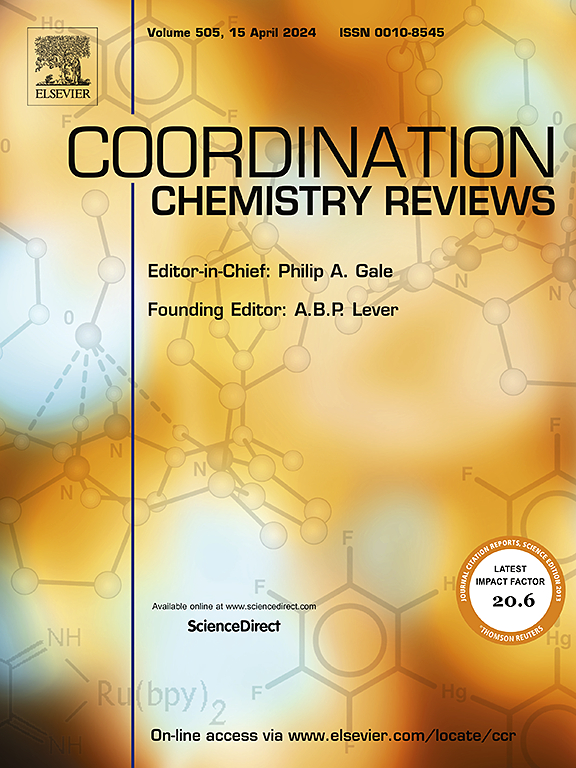用于癌症基因治疗的金属基生物材料
IF 20.3
1区 化学
Q1 CHEMISTRY, INORGANIC & NUCLEAR
引用次数: 0
摘要
基因治疗在纠正基因畸变方面具有巨大的潜力,为癌症治疗和治愈提供了革命性的前景。与传统疗法相比,基因疗法显示出明显的优势,包括较少的剂量要求、毒性降低和避免耐药性。然而,基因治疗在癌症治疗中的临床应用仍存在脱靶效应、治疗时间延长、治疗效果不理想等挑战。基因治疗主要依赖于各种基因调控工具,如DNAzymes和RNA干扰生物材料,以及基因编辑工具,如基于crispr的技术。金属离子在提高基因治疗的有效性方面发挥着重要而多方面的作用。金属离子作为酶促辅助因子,可以显著增强催化活性,同时也可以作为基因传递载体设计中的功能成分,从而改善治疗效果。然而,金属基生物材料在癌症基因治疗中的潜力尚未得到全面的综述。本文深入分析了金属离子在增强基因调控和基因编辑工具中的作用,重点介绍了金属离子对癌症基因治疗的疗效、精度和解决现有挑战的贡献。本文章由计算机程序翻译,如有差异,请以英文原文为准。
Metal-based biomaterials for cancer gene therapy
Gene therapy holds immense potential to correct genetic aberrations, offering revolutionary prospects for cancer treatment and cures. Compared to conventional therapies, gene therapy demonstrates distinct advantages, including less dosing requirements, reduced toxicity, and the avoidance of drug resistance. However, challenges still exist for the clinical application of gene therapy to cancer treatment, including off-target effect, extended treatment duration, and suboptimal therapeutic efficacy. Gene therapies predominantly rely on a variety of gene regulation tools, such as DNAzymes and RNA interference biomaterials, and gene editing tools like CRISPR-based technologies. Metal ions play crucial and multifaceted roles in enhancing the effectiveness of gene therapy. As enzymatic cofactors, metal ions significantly enhance catalytic activity, and they also serve as functional components in the design of gene delivery vectors, thereby improving therapeutic outcomes. However, the potential of metal-based biomaterials in cancer gene therapy has yet to be comprehensively overviewed. This review provides an in-depth analysis of the roles of metal ions in augmenting gene regulation and gene editing tools, highlighting their contributions to therapeutic efficacy, precision, and the resolution to existing challenges in cancer gene therapy.
求助全文
通过发布文献求助,成功后即可免费获取论文全文。
去求助
来源期刊

Coordination Chemistry Reviews
化学-无机化学与核化学
CiteScore
34.30
自引率
5.30%
发文量
457
审稿时长
54 days
期刊介绍:
Coordination Chemistry Reviews offers rapid publication of review articles on current and significant topics in coordination chemistry, encompassing organometallic, supramolecular, theoretical, and bioinorganic chemistry. It also covers catalysis, materials chemistry, and metal-organic frameworks from a coordination chemistry perspective. Reviews summarize recent developments or discuss specific techniques, welcoming contributions from both established and emerging researchers.
The journal releases special issues on timely subjects, including those featuring contributions from specific regions or conferences. Occasional full-length book articles are also featured. Additionally, special volumes cover annual reviews of main group chemistry, transition metal group chemistry, and organometallic chemistry. These comprehensive reviews are vital resources for those engaged in coordination chemistry, further establishing Coordination Chemistry Reviews as a hub for insightful surveys in inorganic and physical inorganic chemistry.
 求助内容:
求助内容: 应助结果提醒方式:
应助结果提醒方式:


